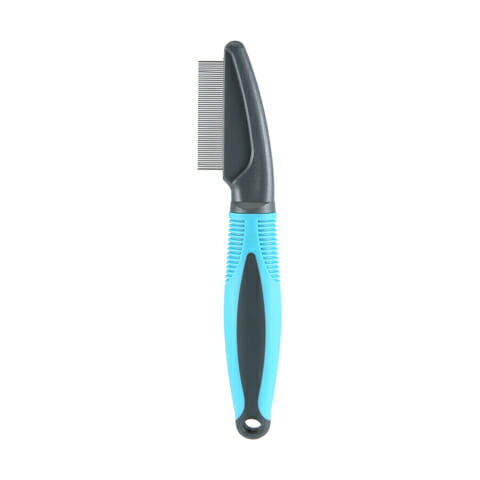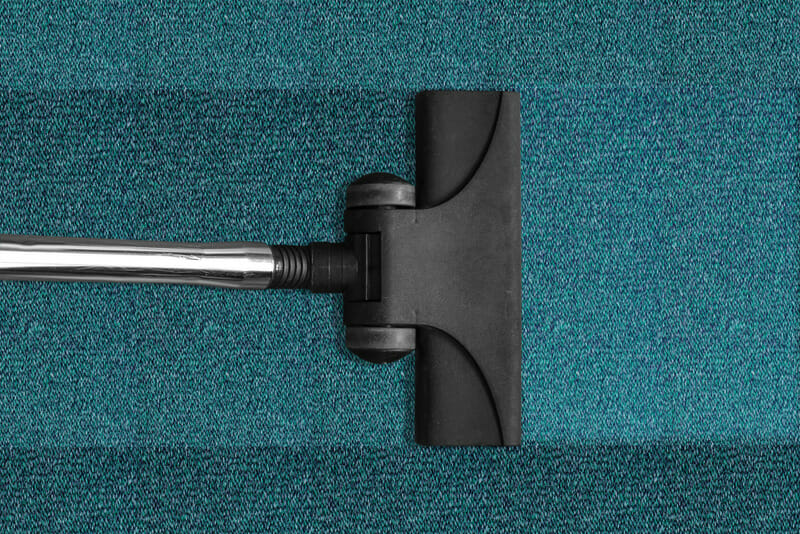The bane of a dog’s existence, fleas are small flightless bugs that survive by sucking the blood of animals and even humans. Thriving in moist, humid environments and during warmer seasons of the year, fleas hop from host to host, latching on to their unknowing prey, piercing the prey’s skin to suck on its blood, and laying eggs all over its body.
No matter how often you groom your dog or how much you sanitise your home, there are no surefire ways to keep your pet and your household 100% flea-free. Your fur buddy may easily get fleas when he comes into contact with other domestic or wild animals with infestations, or by simply walking through outdoor areas with long grass and shaded leaf piles.
With this quick guide, we’ll teach you how to properly get rid of fleas on your dog, and, more importantly, prevent a flea infestation at home. But first…
How can you tell if your dog has fleas?
Answer these questions with a YES or NO:
- Is your dog constantly scratching his body?
- Is your dog losing hair or getting bald/sore patches, especially in his neck or tail?
- Are there spots, redness, and irritation found on your dog’s body?
- Are there thickened skin in areas such as his ears?
- Can you see tiny dark specks (flea dirt) or small, fast-moving brown or black insects (fleas) in his fur?
- Do you also suffer from inexplicable insect bites?
If you answered YES to any of these questions, your dog may have a flea (or more!) dwelling in his fur that you don’t know about.
TIP: If you’re not sure what flea dirt is, it’s actually flea feces that are a mixture of blood and flea waste. They look like small dark brown or black clumps, similar to pepper flakes. If placed on a wet paper towel, these specks will leave reddish brown marks on the towel.
What happens if your dog has fleas?
When your dog gets bitten by a flea, it will leave him feeling itchy and uncomfortable. Worse, the flea bite may cause other complications such as dermatitis (a skin allergy that is caused by the flea’s saliva), tapeworms (your dog can get these by accidentally ingesting infected adult fleas in an effort to groom themselves), and blood loss (which can lead to death to sickly, frail, and young dogs).
How can you remove fleas on your dog?
We strongly suggest you take your dog to the vet as soon as you suspect fleas. For ideas on what to do while you wait for a vet appointment, read on…
1 Give your dog a bath.
Loosen the fleas residing on your dog’s fur and skin by giving him a bath consisting of lukewarm water. You can also use flea soap or shampoo to help kill those nasty critters. Just make sure the product doesn’t end up harming your dog’s skin, especially if it tends to be on the sensitive side. Consult with your veterinarian for advice on the best flea treatment products before buying and using these products on your dog.
When bathing your dog with flea shampoo, make sure that he will be able to stand still and be lathered up for approximately five to 10 minutes. This is the length of time needed for the shampoo to sink in and take effect. Younger dogs may have a harder time keeping still.

2 Comb your dog’s fur with a flea comb.
A fine-tooth flea comb will help you remove fleas, flea dirt, and other debris from your dog’s fur. When combing, get as close as you can to your dog’s skin and be careful when you glide it through his neck and tail because these are the areas where fleas usually feed. To kill the fleas you take out, immediately immerse the comb in a bowl of hot soapy water. Don’t attempt to squish the fleas using your hands because their exceptionally hard exterior will make it difficult for you to crush them. Plus, they can quickly hop off your fingers.

3 Use vet-approved flea treatments on your dog.
Following your veterinarian’s advice, purchase the recommended treatment and use it on your dog. You can get either oral medication (in chewable or pill form), topical medication (spot-on medicine applied over hard-to-reach areas), or dog flea and tick collars that don’t need a prescription. These treatments work to kill the adult fleas and/or eggs and larvae that may be living on your dog’s fur.
When picking the best type of treatment for him, consider the following factors:
- His age – Check the label to make sure it can be used by your dog. Many flea treatments are not recommended for young puppies.
- His breed – Some dog breeds have thicker coats, making it harder for topical flea treatments to sink into the dog’s fur and skin.
- His health – It’s important to check your dog’s current medication and conditions because these might not go well with some ingredients found in flea medication. For example, medications with spinosad are not recommended for dogs with epilepsy.
- His lifestyle – Regular exposure to children and cats should also be taken note of as certain ingredients from flea collar or topical medication may be toxic for them.
- His environment – You may be living in an area where parasites are common all year round or they are resistant to specific preventatives.
When purchasing your dog’s flea treatment, it’s essential to use clinically tested products from reliable sources. It should be consumed or applied according to your vet’s instructions so that the product works effectively.
TIP: If you own more than one dog or other animals at home, the others should be treated for fleas as well.
4 Rid your home of fleas.
It’s not enough to physically remove the fleas found on your pet. You must also work to remove them in the indoor and outdoor areas your dog frequents to prevent reinfestation. Fleas can live in carpets, skirting boards, beddings, and furniture, and survive in the surrounding environment for months without a host, so you must consistently and diligently treat your home to eradicate them.
Beddings—yours and your pet’s—and toys should be washed in hot, soapy water. Hardwood floors, carpets, area rugs, upholstered furniture, and even furniture bottoms should be thoroughly vacuumed, with the vacuum bag immediately disposed of outside the home.

Steam cleaning can also work to kill flea larvae, but applying chemical treatment may be your best option in eliminating them. Hire a local exterminator to use foggers with boric acid, sodium borate, and/or methoprene to help kill full-grown fleas and all its other life cycle stages.
Be sure to also thoroughly clean your doghouse or kennel found outside your home. Regularly mow the yard, trim hedges and bushes, and remove leaves or garden debris where fleas could hide out. Insect growth regulators, sprays, and pelleted insecticides can also assist you with keeping fleas at bay.
Don’t forget to regularly inspect your home for fleas. You can do this through two easy methods:
- White socks method – Wearing white socks, walk around the different areas your dog regularly stays in. Check your socks for fleas or flea dirt particles.
- Light trap method – Place a small bowl of water with dishwashing soap under a nightlight in the evening. Since adult fleas are attracted to light, they will try to jump toward the light and may fall into the bowl.
To recap
With this article, we hope you discovered everything you needed to know about fleas. By learning how to tell if your dog has fleas, what happens if your dog has fleas, and how to remove fleas on your dog and prevent reinfestation from occurring, you can be the best pet parent to your furry companion.
For more helpful tips, read up on other pet parenting guides in our blog! Learn how to remove ticks or clip his nails properly.
Leave a comment
Your email address will not be published. All fields are required.